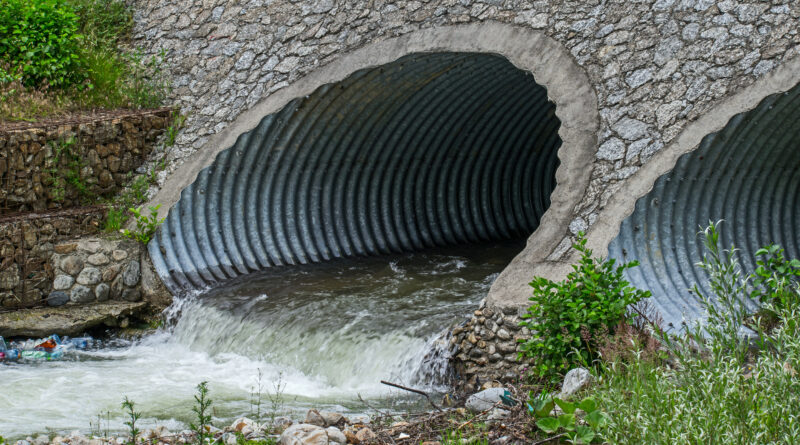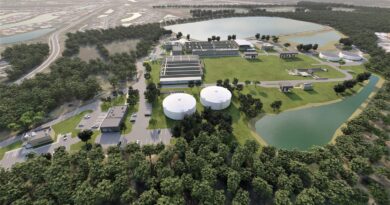Flowing Forward: Addressing America’s Aging Water Infrastructure Challenges
The aging U.S. water infrastructure underscores the need for comprehensive reforms to ensure safe, reliable nationwide water supplies.
While U.S. drinking water is widely regarded for its safety and reliability, the nation faces significant challenges due to aging infrastructure. The American Society of Civil Engineers (ASCE) reports that a water main breaks every two minutes on average, highlighting urgent infrastructure needs across the country. Recent water issues in the Atlanta, illustrate broader challenges impacting many parts of the country. In just the past week alone, Atlanta residents were met with a drinking water supply affected by burst water mains and widespread industrial breaks. Although one major pipe has been repaired, many systems remain at risk, water advisors emphasize the immediate need for improving water safety in cities and daily life.
Richard Luthy, a professor of civil and environmental engineering at Stanford University, points out that much of the country’s water infrastructure dates back 50 to 100 years. This aging infrastructure contributes to frequent breaks and disruptions. ASCE notes that these breaks not only affect water flow but also critical services such as hospitals and manufacturing, leading to significant economic losses.
Atlanta’s issues are not isolated incidents. Water infrastructure problems are widespread, with lead pipes compromising water safety in cities like Flint, Michigan, and PFAS contamination affecting water supplies nationwide. In response, the Bipartisan Infrastructure Law of 2021 allocates $11.7 billion to address water issues, including $15 billion for lead pipe replacement and $9 billion for emerging contaminants like PFAS. Despite these allocations, additional funding is essential to meet the estimated $452 billion needed to replace aging water mains nationwide.
A recent survey highlights that 19% of U.S. water mains have exceeded their estimated lifespan of 50 years, underscoring the critical need for enhanced asset management and investment in aging water infrastructure.
The “Water Main Break Rates in the USA” study conducted by Utah State’s Water Research Laboratory surveyed 20 utilities across 49 states. The study reveals that 452,000 miles of water mains need replacement due to funding gaps, with an estimated replacement cost of $1 million per mile. The average age of failing water mains is 50 years, and approximately 33% of water mains in use are over 50 years old, highlighting the nation’s aging infrastructure.
From 2018 to 2023, there was a 20% decrease in annual break rates, attributed partly to reduced use of high-failure materials such as cast iron and asbestos cement. PVC, the most commonly used material, boasts a low annual failure rate of 2.9 breaks per 100 miles.
The aging U.S. water infrastructure poses a significant challenge that demands urgent attention and substantial investment. While recent federal efforts represent a step forward, addressing this challenge comprehensively requires coordinated efforts at all levels of government to ensure reliable and safe water supply for current and future generations.
Expanding further, addressing these infrastructure challenges is not only critical for health and safety but also for economic stability. The frequent disruptions caused by aging water mains not only inconvenience residents but also impose significant costs on essential industries that rely on consistent water access. Hospitals, in particular, face critical challenges during water main breaks, as disruptions can affect patient care and operational services.
Moreover, the environmental impact of outdated infrastructure cannot be overstated. Lead pipes continue to jeopardize water quality in older cities, while emerging contaminants like PFAS pose new threats that require proactive mitigation strategies. The recent federal funding initiative, while a positive step, must be complemented by sustained investment and innovative approaches to improve water management.
Cities and states across the U.S. are grappling with the dual challenges of replacing aging infrastructure and adapting to new environmental and health threats. The resilience and reliability of water systems are crucial for urban planning and development. New investments aimed at rebuilding these systems offer a pathway to growth potential. By prioritizing infrastructure investments and advancing technological advancements in water management, communities can mitigate risks and ensure sustainable water access for future generations.
While the scale of the challenge is daunting, proactive investment in water infrastructure is essential for safeguarding public health, economic resilience, and protecting natural resources. With coordinated efforts and strategic planning, the U.S. can address infrastructure needs comprehensively and ensure a resilient and sustainable water supply system for years to come.




